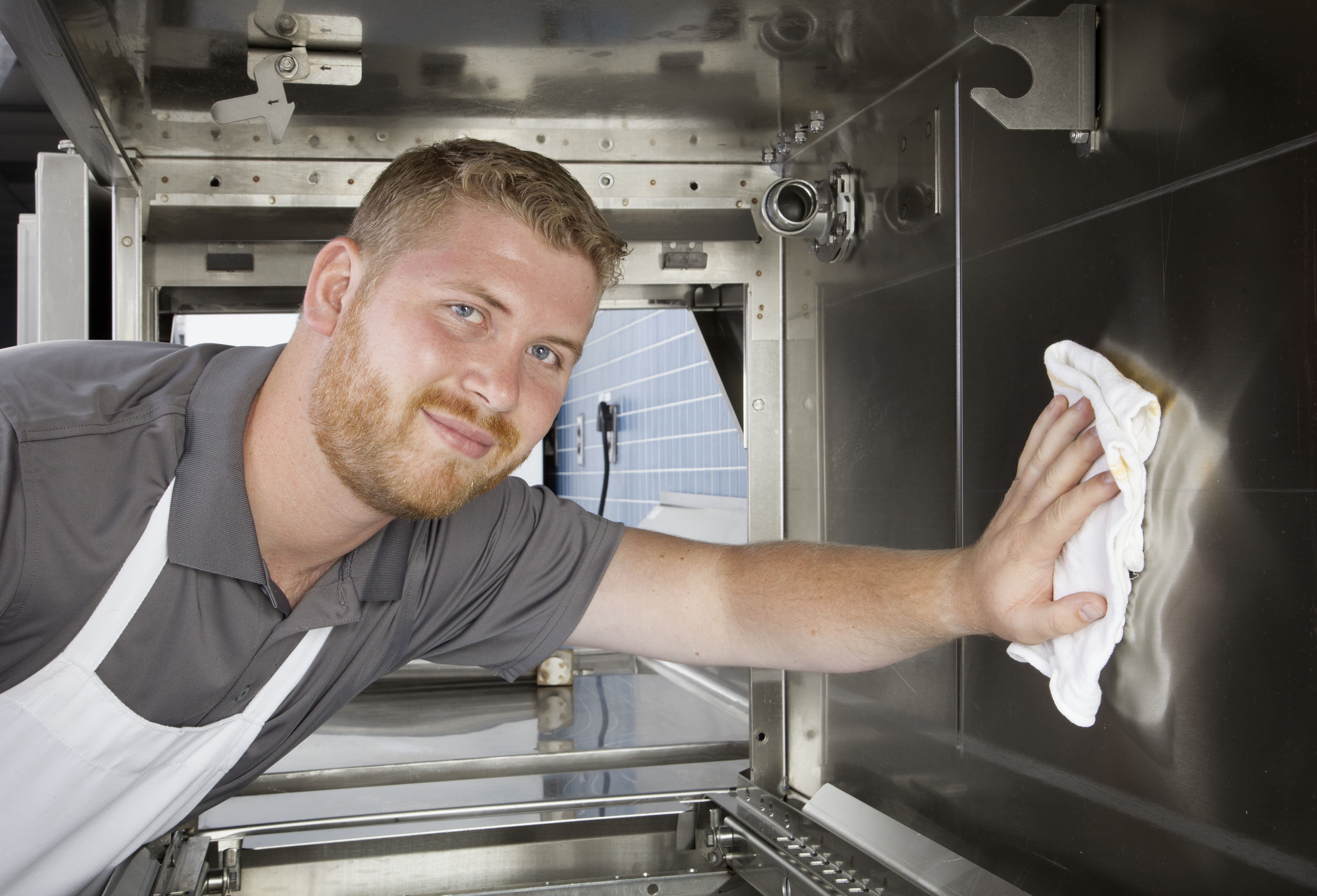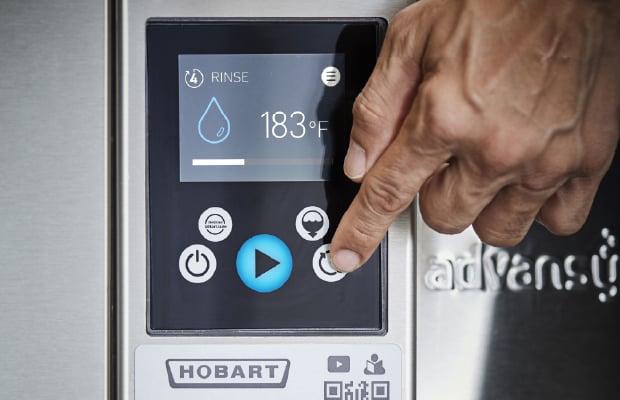One of the most frustrating things to deal with as a foodservice operator is an equipment failure. When your grill won’t fire up you can’t cook, if the walk-in isn’t cooling you lose inventory, and when the dishmachine goes down you’re forced to revert to manual washing – or serving food on disposables. This adds cost and labor hours to busy operations.
Taking good care of your commercial dishwasher significantly reduces the chance of unscheduled downtime. The old adage, “An ounce of prevention is worth a pound of cure,” holds true when it comes to getting the most out of your dishmachine,
Following the 3 Ps of dishmachine care can help keep your dishmachine running and extend its lifespan.
1. Process
The following recommended processes for daily use help keep dishmachines running at top performance levels and reduce the risk of downtime.
- Pre-scrap and rinse dishes thoroughly before loading. This helps prevent food soil from clogging filters, baskets, and wash arms. Hobart Technologies like Automatic Soil Removal also help filter out food soils, while extending wash water life.
- Make sure dishmachine chemicals are properly dosed, and replace them when empty, (using proper PPE). This helps prevent soil build up on surfaces inside the machine.
- Be sure to properly load racks and avoid overloading the dishmachine with over-size ware. This prevents damage to wash and rinse arms or other parts inside the machine.
2. Proper Cleaning
Keeping a dishmachine clean helps ensure the equipment runs at its best performance and helps prevent premature wear on parts. This list of daily maintenance tasks is designed to keep food particles from clogging up filters and nozzles, which can stress pumps and motors, as well as reducing limescale build up, which can cause excess strain on heaters and boosters.
Complete these tasks each day to keep your dishmachine clean and running efficiently:
- Spray down the interior of the machine to clear away any remaining food particles or residue.
- Wipe down the exterior of the machine with stainless-steel polish to protect against corrosion and maintain its appearance.
- Remove the wash and rinse arms and clean them in soapy water.
- Remove and clean the scrap basket and strainer pan to maintain proper drainage and prevent clogs.
- Remove and clean the curtains to prevent any buildup of grime or debris that could brush against the freshly washed dishes when they exit the dishmachine.
- Spray and wipe down the tank interior to remove any remaining food residue or buildup.
- Delime the machine at regular intervals to prevent limescale buildup that can reduce wash performance or cause heaters to fail. Deliming technology on Hobart dishmachines provides notifications when it is time to delime, and delimes the complete machine, including the booster.
3. Preventative Maintenance
In addition to the daily cleaning tasks, it is important to have a service technician do preventative maintenance at scheduled intervals. The technician will check for wear and tear on parts, replacing them as needed, which can head off unscheduled downtime. Technicians also look for proper water flow and pressure, check control panels and electrical connections, and make sure heating elements are working as they should. Think of your dish machine like a car. For a car to function properly you need routine oil changes, tire rotations, along with fluid and filter checks. Just like a car, your dishmachine needs preventative maintenance by a certified service technician to make sure everything runs smoothly.
Why the 3 Ps Matter
Making the 3 Ps of dishmachine care part of your operation’s best practices will help increase your dishroom uptime. And with an efficient dishmachine, you can be assured you’re serving food on properly sanitized ware without having the extra workload on staff of washing everything in a three-compartment sink. By prioritizing Processes, Proper Cleaning, and Preventative Maintenance, you are not just taking care of your dishmachine, you are protecting your dishroom’s efficiency, your staff’s time, and your guests’ dining experience.





.png)

%20proc%20%20(1).jpg)


